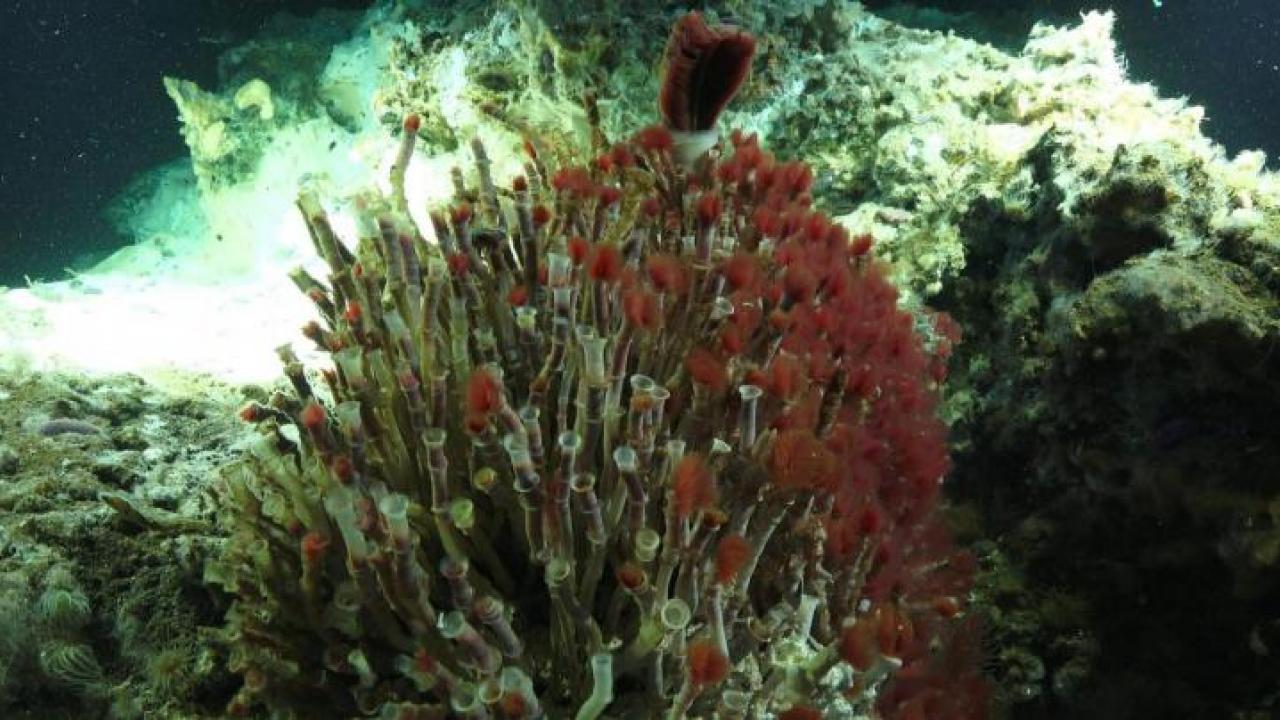
New undersea maps lead to hydrothermal vent and species discoveries
A spectacular new hydrothermal vent field, named JaichMatt, has been discovered during an expedition aboard Schmidt Ocean Institute's R/V Falkor. The vents were identified using Monterey Bay Aquarium Research Institution's (MBARI) Dorado autonomous underwater vehicle to conduct exploratory seafloor surveys with one meter lateral resolution. Simultaneously, MBARI's new Low Altitude Survey System was used from Schmidt Ocean Institute's remotely operated vehicle SuBastian to map the previously discovered Auka Vent field at centimeter scale resolution using co-located multibeam sonar, scanning laser Lidar, and stereo photography. The biological communities and the geological and geochemical characteristics of these vent fields were then explored and sampled using ROV SuBastian.
This system was discovered in 2015 on a MBARI research cruise, and has been visited by scientists only a few times. The new vent field name, JaichMaat, translates to liquid metal in an ancient language of the indigenous people of Mexico surrounding the region, in reference to the reflective hydrothermal fluid and seawater interface that was found ponded along the roof of a large cavern in the hydrothermal mound. The new vent field consists of multiple hydrothermal calcite mounds up to 25 meters high that were venting fluids at temperatures as high as 287° C. Groups of animals common in non-hydrothermal settings, including anemones, were also observed for the first time in dense accumulations at the base of the mounds, and many previously unknown species were identified.
In addition to identifying sites of hydrothermal venting, the combined mapping and ROV exploration also sampled the first volcanic rocks collected in both the North and South Pescadero Basins, confirming that in these basins the continental rifting that has formed the Gulf of California has transitioned to seafloor spreading and the volcanic formation of new oceanic crust. The Pescadero Basin is a unique site for studying microbial extremophiles involved in methane and hydrocarbon metabolism and an important location to try to understand how vent fauna colonize similar sites around the globe.
Robert Zierenberg, professor emeritus in the UC Davis Department of Earth and Planetary Sciences, Victoria Orphan from California Institute of Technology, and David Caress from MBARI, along with scientists from Oregon State University, the Universidad Autónoma de Baja California, the Centro de Investigación Científica y de Educación Superior de Ensenada (CICESE), and the Scripps Institution of Oceanography, demonstrated the multi-disciplinary use of submarine robotics while investigating an area of unique geologic activity where submarine volcanism in heavily sedimented basins results in high temperature venting with unusual chemistry and geology.
— Originally published on EurekAlert! by the Schmidt Ocean Institute
